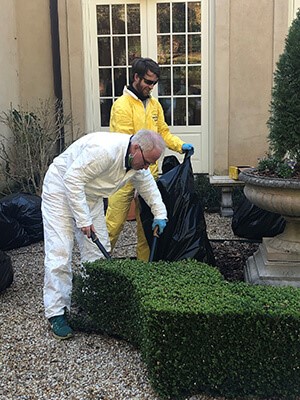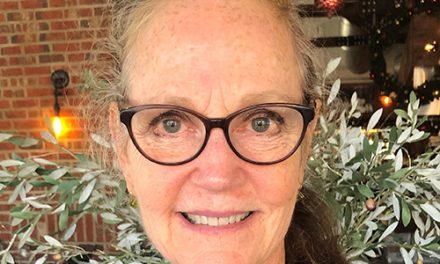Joro spiders are on the move. Last summer these large-webbed spiders were sighted across Northeast Georgia, but the latest reports now show that they have spread to nearby states, including North Carolina, South Carolina and Tennessee.
As a result, a special computer site – Joro Watch, (www.jorowatch.org) has been established to track these annoying spiders. A recent news release from the Georgia Department of Natural Resources, Wildlife Management Division, is asking residents to help track this invasive species that first appeared in Northeast Georgia several years ago.
The site, developed by the University of Georgia, Valdosta State University and Southern Integrated Pest Management Center, includes reporting forms, plus detailed information about the Joros. It will also be promoting Joro Watch events to encourage the public to help track the spiders’ movements and geographic reach and frequency.
Other topics on the site include ideal spotting times, safety tips and ways to differentiate between Joros and native look-alikes such as golden silk orb-weavers and yellow garden spiders.
Report Joro sightings using the form on the website to assist with tracking the spiders across the state and the Southeast. It will be updated to include a Joro Watch Awareness Day event and other developments.
The website also includes a detailed FAQ document to help dispel myths about the spider. For more information, visit www.jorowatch.org.
Boxwood blight affects historic plants

Workers at Hills & Dales Estate prune affected boxwood shrubs.
Boxwood blight, present in Georgia since 2013, has been affecting English Boxwoods across the state, including various historic gardens and estates.
“The recent spate of ongoing rains, coupled with temperatures between 60 and 80 degrees, have made conditions ideal for the blight to affect English Boxwoods, which are the most susceptible of the species,” says Carleton Wood, executive director of Hills & Dales Estate historic gardens in LaGrange. “We have been actively removing affected plants, as well as those nearby and disposing of them; and we’re following an aggressive fungicide spraying program to try to prevent further spread.”
Hills & Dales is known for its 3.5 acres of 150-year-old Dwarf English Boxwood plantings, called parterres, that were created by Sarah Ferrell, one of the property’s original owners. When the property was purchased in 1911 by textile magnate Fuller E. Callaway and his wife Ida Cason Callaway, they asked that architects Neel Reid and Hal Hentz design their new home to complement the historic gardens.
“We have other types of boxwood on the property, including American Boxwood, Spanish boxwood and curly-leaf boxwood, but they don’t seem to be as affected by the blight,” he says. “At this point, there’s no cure for the fungus, but be assured that we will be maintaining the historic integrity of the gardens by replanting with similar looking species or resistant boxwood.”
The Georgia Department of Agriculture has posted information about the blight: “The fungus can be spread by numerous means including splashing from raindrops, contact with clothes, shoes, animals, and pruning equipment. Using proper sanitation practices when working around boxwoods and proper disposal of infected plants is crucial to help prevent and control the spread of this pest. No curative treatment for the pathogen has been found. There are fungicides that can be used through repeated applications as a preventative measure to help protect non-infected boxwood plants. The disease causes severe symptoms including leaf spots, leaf drop, and black stem lesions.”
For more information about how homeowners can help detect and help contain the blight in their landscape, visit www.georgia.gov. There are also several articles on the Hills & Dales Estate website: www.hillsanddales.org.
Photo: courtesy of Hills & Dales Estate






